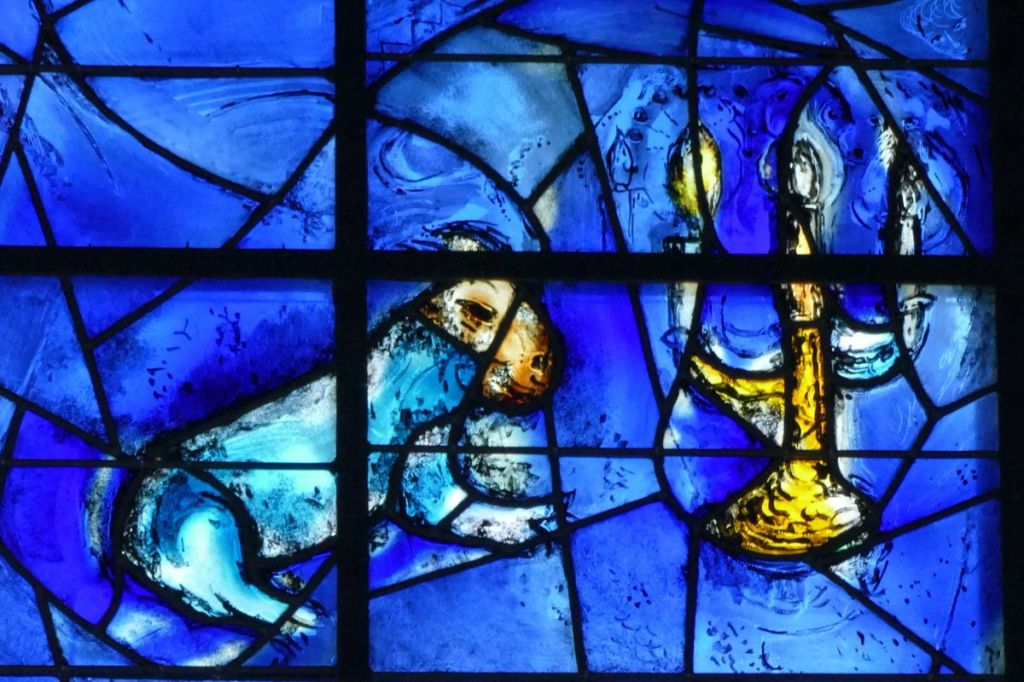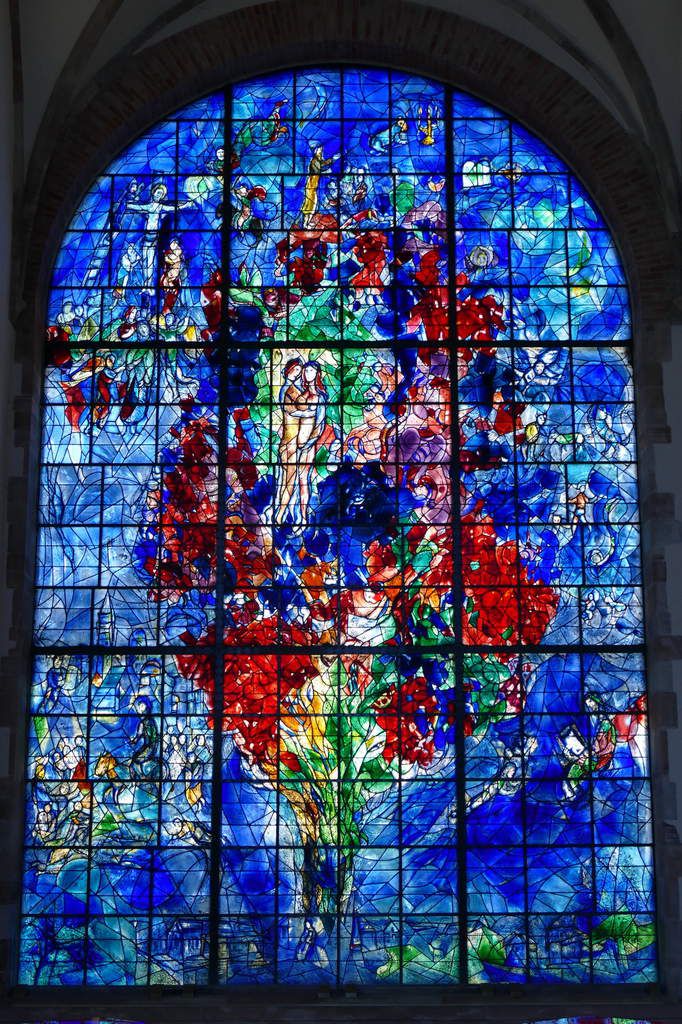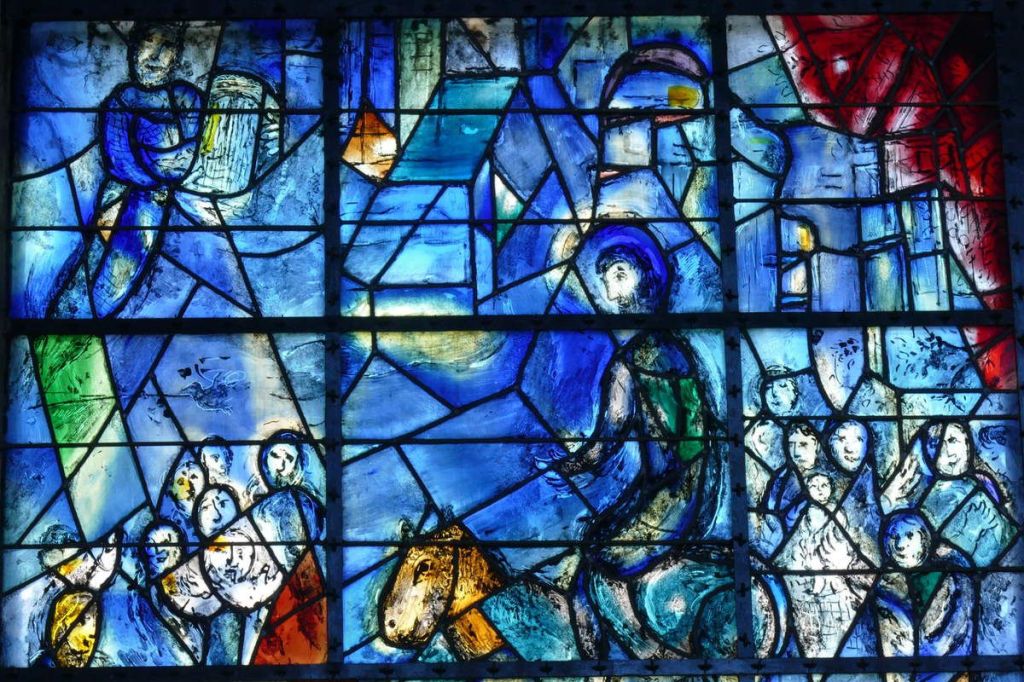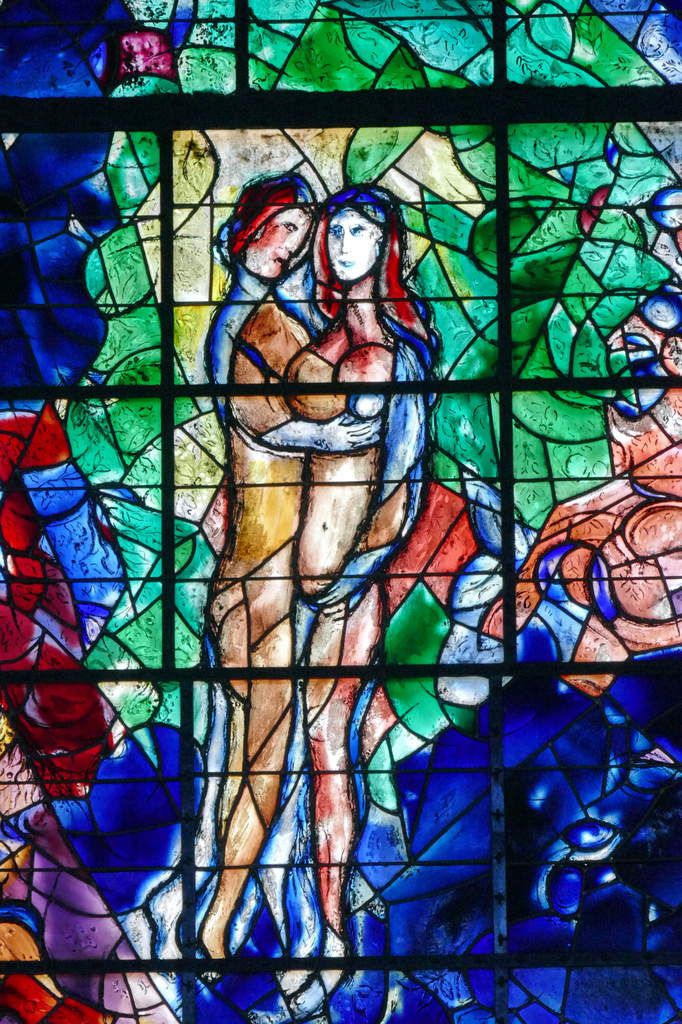February Art: hope
Today is a black day. The death of Alexei Navalny, killed by the Russian state, marks the latest chapter in the rise of authoritarian neo-fascism not only in Russia but across the western world: the second greatest threat to humanity after environmental destruction, though given its reliance on coal and petrochemicals these forces combine. I thought to mark it with Kasimir Malevich’s iconic, nihilistic Black Square, but what such a negative movement hates most is transparency, light, life so instead February Art turns to another artist persecuted by Russia, Marc Chagall, and his L’arbre de vie (Tree of Life 1976) from the Chapel des Cordeliers, Sarrebourg, France.
Born Moishe Shagal in Vitebsk in what is now Belarus, as an émigré Jewish artist Chagall’s work draws on memories of home, playing variations on a series of recurring homely motifs: lovers, animals, mothers, musicians, dreamers, all of whom people this panel, though in biblical guise: David playing the harp, Isiah with angels, Jesus entering into Jerusalem (bottom left) and a couple so joyful they surely represent more than Adam and Eve.
‘When Matisse dies Chagall will be the only painter left who understands what colour really is’ said Picasso, and in his later glassworks Chagall’s ability to paint with light extends such subtle pantheisms into political meaning, commemorating (as did Barbara Hepworth) Dag Hammerskjöld for the United Nations in windows flooded with hope.

The most human of modernists, Chagall, decided André Malraux, has ‘looked at the world with the light of freedom, and seen it with the colours of love’.




